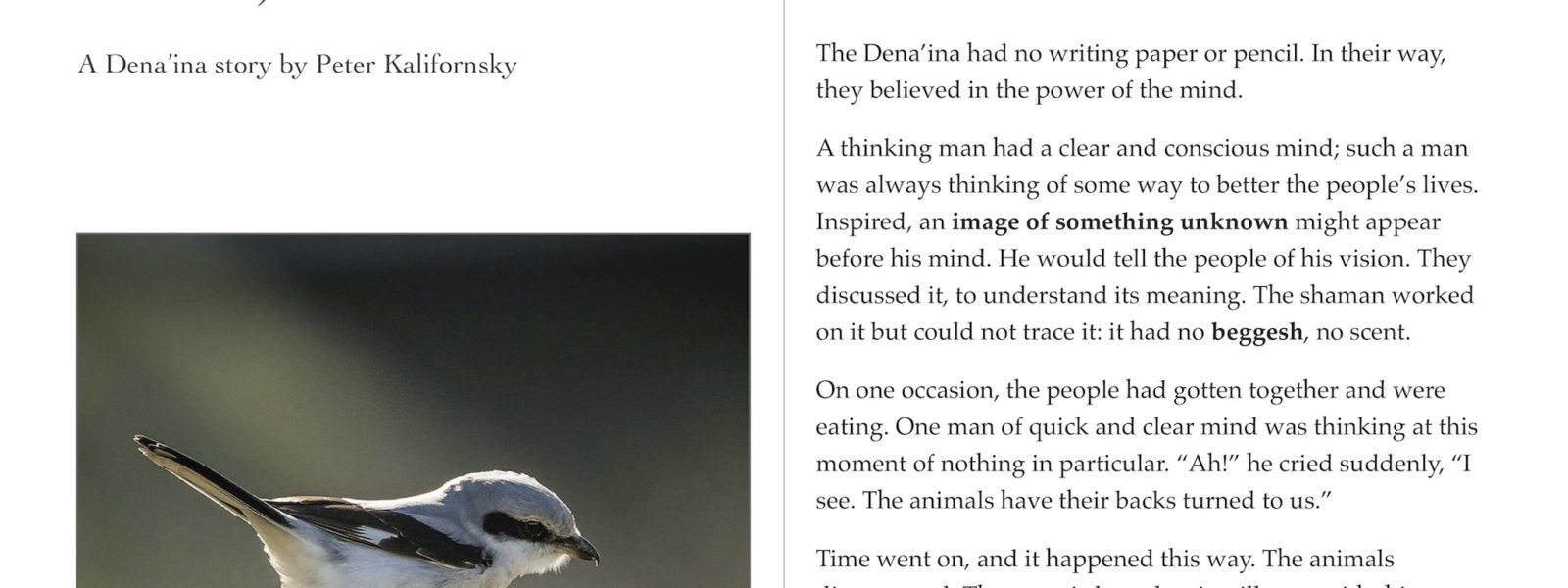From the Believing Time, When They Tested for the Truth is now available on Apple Books. It contains Peter Kalifornsky’s stories of marvels: the great invisible powers and the moral—sometime mortal—tests the old Dena’ina underwent to prove to themselves whether their beliefs were true.
In our long discussions about these stories, he tells how their minds worked. “They lived life through Imagination,” he said, “the power of the mind.”
He explained what this meant. The word for Imagination is eynik’ delnish. It implies a theory of mind. Eynik’is joined from the words for “in between” and “nose,” to mean: Something—a spirit—works on the mind invisibly, contacting it; implying: breathing into it. Delnish is a jointed word meaning “it turns over,” the motion of turning side to side, regularly, cyclically, as the seasons turn; and is related both to “nose” (breathing) and dnelnish, the pattern that we recognize: the truth that underlies our making sense of the world.
The Dena’ina did not recognize a duality of real/unreal between the incorporeal vision and material beings, although they recognized that the imagination might work “for nothing,” which Peter associated with fantasy or useless thinking, solipsism. In their world, everything that existed had its own spirit, and truth occurred when the spirits of two things connected with one another. The power of the mind was to see the image of this connection. It appeared as a vision, to an alert, conscious person. This was real, and it was a truth to be tested.
I suggested that our word inspiration, in-breathing, the oldest sense of the poetic imagination, also corresponded to this form. “An inspired imagination” might convey this sense of connection.
But it is a deeper experience to read him — his stories, his commentary — than my interpretation.
In this new volume, Peter Kalifornsky explores how the Dena’ina were willing to test the truth of their dreams and beliefs, by going up against great powers—the great invisible power that the k’ech’eltanen followed; the animal powers, of which bear’s was the greatest; the various shamanic powers; the Man Whose Word Comes True—for the sake of learning truth. They put their very lives at risk, according to the stories. And why was this so? There is a mystery that he said should go at the end of every story:
Yadidi sukdu egh? k’ushta beq’eynikdelnik. What is this story about? We cannot find what is behind it.
Sukdu beq’ quht’ana ghuda ch’ulani. The story lays a trail before us; we follow it to become human.
Bech’ nayich’chi. Something gives us what we breathe. What is it?
The Kalifornsky Project Journal
